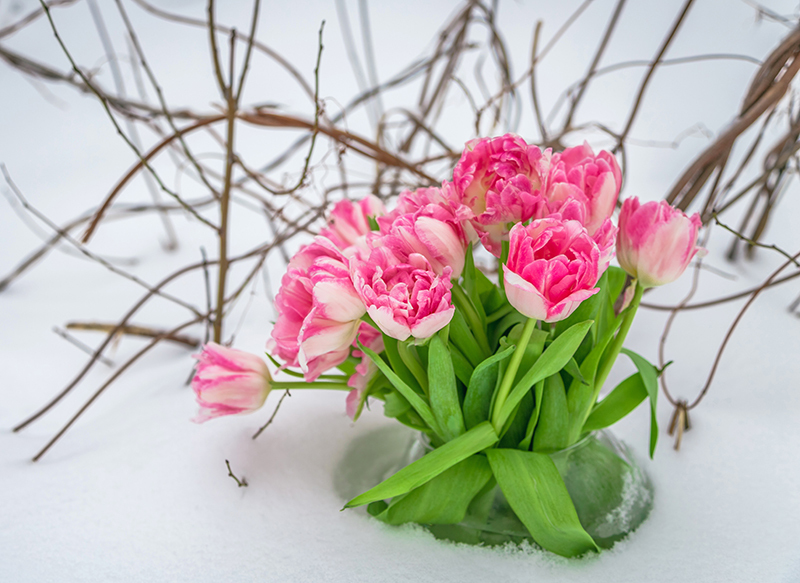Transformative Hydrangea Care for Bold Blooms
Posted on 13/08/2025
Transformative Hydrangea Care for Bold Blooms
Hydrangeas are iconic garden shrubs, celebrated for their spectacular blooms and vibrant foliage. Whether you dream of blue, pink, or white blossoms, mastering transformative Hydrangea care will help you achieve head-turning, bold flowers season after season. In this comprehensive guide, you'll discover cutting-edge techniques, time-tested tips, and expert insights into nurturing Hydrangeas for their most robust display yet.

Understanding Hydrangea Basics: Foundation for Success
Before diving into transformative care methods, it's essential to understand the basics of Hydrangea plant needs. The health and vigor of your blooms depend on several vital factors:
- Hydrangea Types: Mophead, Lacecap, Panicle, Smooth, and Oakleaf Hydrangeas each have unique care requirements.
- Preferred Conditions: Most Hydrangeas prefer partial sun and moist, well-drained soil.
- Soil Acidity: The flower color of some varieties, especially Hydrangea macrophylla, changes with soil pH.
Choosing the Right Hydrangea Variety
Understanding your local climate and landscape is crucial for selecting a Hydrangea variety that will not only survive but thrive. Here's a brief overview of main types:
- Bigleaf Hydrangeas (Hydrangea macrophylla): Classic mophead and lacecap blooms; color changes with soil pH.
- Panicle Hydrangeas (Hydrangea paniculata): Cone-shaped flowers, tolerant of sun and cold; reliable for bold blooms.
- Smooth Hydrangea (Hydrangea arborescens): Native to North America; known for enormous, ball-shaped blooms.
- Oakleaf Hydrangea (Hydrangea quercifolia): Distinctive oak-shaped leaves and dramatic, elongated flower clusters.
Transformative Hydrangea Soil Preparation
The foundation of bold Hydrangea flowers is healthy, nutrient-rich soil. Start by amending the planting site with organic matter such as compost or well-rotted manure. This increases humus content, improves drainage, and encourages robust root development.
Soil pH is instrumental in not only the health but also the color intensity of certain Hydrangeas. Mopheads, for example, can be encouraged to produce blue blooms with acidic soil (pH below 6) or pink blooms with more alkaline soils (pH above 7).
Testing and Adjusting Soil Color for Dramatic Blooms
For gardeners seeking show-stopping colors, soil testing is key:
- Use a simple pH testing kit in early spring.
- To intensify blue hues, add aluminum sulfate or pine needles to acidify the soil.
- For brighter pink blooms, mix in garden lime to raise the pH.
- Monitor results and adjust annually for consistent color quality.
Watering: Essential for Magnificent Hydrangea Blooms
Hydrangeas thrive on reliable moisture. Consistent watering helps prevent wilt and ensures nutrient uptake, both critical for bold blooms. Here are some expert watering strategies:
- Water deeply, 1-2 times per week, especially during dry spells.
- Early morning watering reduces evaporation and prevents fungal diseases.
- Mulch with 2-3 inches of bark or leaf mulch to retain moisture and protect roots from temperature swings.
- Avoid overwatering: Soggy soil leads to root rot and can prevent blooming altogether.
Fertilization: Nourishing Hydrangea for Bold Flower Clusters
Fertilizing is a transformative step for achieving lush, large Hydrangea blooms. Feed your plants at the right time, with balanced nutrients, for dramatic impact.
Key Fertilizer Tips for Hydrangea Bloom Power
- Use a slow-release, balanced fertilizer (10-10-10 NPK) in early spring, just as new growth appears.
- Re-apply in midsummer for extended blooming--especially important for repeat-blooming varieties.
- Avoid high-nitrogen formulas, which stimulate leafy growth at the expense of flowers.
- Incorporate organic options like fish emulsion or compost tea for sustainable nutrition and long-term soil health.
Pruning: Unlocking the Secret to Show-Stopping Blooms
Proper pruning is perhaps the most transformative technique for Hydrangea care. The timing and method depend on your Hydrangea species:
- Bigleaf and Oakleaf Hydrangeas: Prune immediately after flowering, as they bloom on old wood.
- Panicle and Smooth Hydrangeas: Prune in late winter or very early spring. They flower on new wood, so prune hard for bold, fresh blooms.
How to Prune for Maximum Bloom Power
- Remove dead or crossing branches to improve airflow and light penetration.
- Thin out oldest stems at the base to stimulate vigorous new shoots.
- Shape shrubs lightly to maintain strong structure without over-pruning.
- Always use sharp, disinfected tools to prevent disease transmission.
Seasonal Hydrangea Care Checklist for Dramatic Results
Boost your chances of big, bold Hydrangea blooms each year with this season-by-season guide:
Spring
- Apply mulch and balanced fertilizer.
- Check soil pH and amend as needed for desired flower color.
- Prune Panicle and Smooth varieties.
Summer
- Water deeply and monitor during hot, dry periods.
- Deadhead faded blooms to encourage more flowers.
- Inspect for pests and treat organically whenever possible.
Fall
- Cease fertilizing by mid-September to prepare hydrangeas for dormancy.
- Reduce watering as temperatures fall.
- Mulch heavily to protect roots from winter chill.
Winter
- Leave dried flower heads in place for winter interest and bud protection.
- For tender varieties, wrap in burlap or build protective cages filled with leaves.
Sustainable and Organic Hydrangea Care Practices
For gardeners focused on sustainability, organic Hydrangea care is both transformative and environmentally-friendly. Here's how:
- Use compost and leaf mold instead of chemical fertilizers.
- Encourage beneficial insects and pollinators by companion planting with native flowers.
- Avoid synthetic pesticides; opt for neem oil or insecticidal soap when needed.
- Rotate mulch materials to naturally replenish soil nutrients and microbial health.
Solving Common Hydrangea Care Problems
Even experienced gardeners face challenges with Hydrangea blooms. Transformative care means troubleshooting early and often:
- No Blooms? Check pruning timing--prune at the wrong time, and you may remove next year's flower buds!
- Leaf Yellowing? Could indicate iron deficiency or overwatering. Correct with chelated iron and improved drainage.
- Wilting on Hot Days? Provide deep watering, mulch, and a bit of afternoon shade in hottest climates.
- Pest Issues? Look for aphids, spider mites, or scale insects and treat naturally if possible.
Advanced Transformative Tips for Exceptional Hydrangea Blooms
For those committed to the boldest possible flowers, consider these advanced techniques:
- Pinching Buds: Encourage multiple, fuller blooms by pinching back the first set of young buds in spring.
- Selective Thinning: Every few years, remove the oldest stems at ground level to invigorate the plant and stimulate new shoots.
- Regular Deadheading: Trim spent blossoms promptly to direct energy to new flowers rather than seed formation.
- Hydrangea Bloom Boosters: Specialty fertilizers high in phosphorus can intensify bloom size; apply these sparingly, and monitor overall plant health.
Seasonal Hydrangea FAQs
How do I make my Hydrangea blooms bigger and brighter?
Big, bold blooms require healthy soil, regular watering, and annual feeding with a balanced fertilizer. Regular pruning--timed to your plant type--removes old wood and promotes vigorous flowering.
Fine-tune soil pH if you have a bigleaf variety, and always mulch to preserve moisture and feed beneficial soil life.
Why are my Hydrangeas not blooming?
Common causes include pruning at the wrong time, late frost damage, too much shade, or insufficient nutrients. Ensure proper care and be patient--Hydrangeas may skip a year of flowering after transplantation or stress.
What is the best time to plant Hydrangeas for transformative results?
Early spring or fall offers mild temperatures and natural rainfall, giving Hydrangeas the best start for bold summer blooms.

Conclusion: Unleash Your Garden's Potential with Transformative Hydrangea Care
From selecting the ideal variety to feeding, pruning, and protecting your Hydrangeas, a proactive approach ensures you enjoy bold blooms in every season. By understanding your plant's specific needs and applying these transformative care techniques, you'll create a vibrant Hydrangea display that inspires admiration and envy in every visitor.
Begin your bold bloom transformation today--your Hydrangeas will thank you with their brightest, most beautiful flowers ever!
Further Reading: Resources for Bold Bloom Success
- Comprehensive Hydrangea Care Guide
- Hydrangea Growing Tips from Experts
- Royal Horticultural Society: Grow Your Own Hydrangeas
Latest Posts
Essential Orchid Care for Enthusiasts
Captivate Hearts with these Birthday Blossoms
Transformative Hydrangea Care for Bold Blooms





